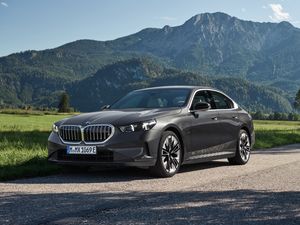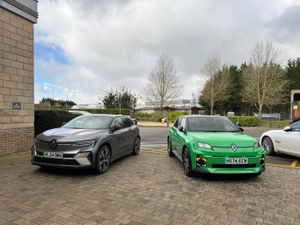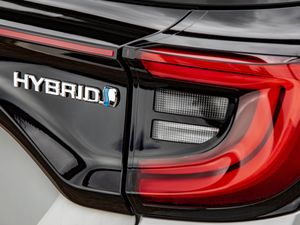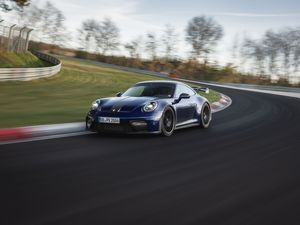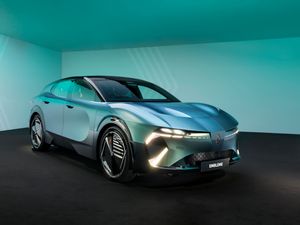Austin Maestro at 40 – the famous talking car which hit the wrong note
Early 1983, and Michael Knight was the coolest sleuth on television.
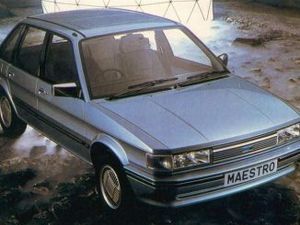
Played by 20-year-old David Hasselhoff, the freelance crimefighter fought for justice on behalf of the powerless, aided by his sleek black hi-tech talking car which had a mind of its own.
One month after Knight Rider made its ITV debut, British Leyland introduced its own talking car.
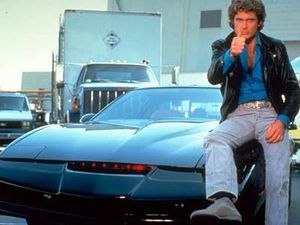
There were some subtle differences. Knight's gleaming Pontiac Trans Am warned him about impending danger, gave him wise counsel in times of trouble, and came to his rescue when his missions went wrong. Whereas the Austin Maestro reminded the driver to put a seat belt on.
And somewhat ominously, the nagging tones were voiced by Nicolette McKenzie, a New Zealand actress who had appeared in the BBC's equally ill-fated drama series Triangle.
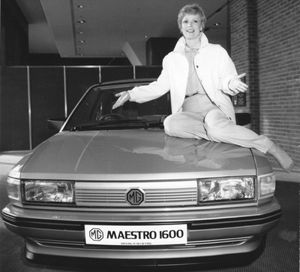
It is 40 years this week since the car which the motoring commentators loved to hate was revealed to the public.
There was certainly a lot riding on the new car. The Metro, launched three years earlier, had been a runaway success, sparking hopes that beleaguered British Leyland was at last on the road to recovery.
But if the Metro was the car that saved BL, it was said that the Maestro would be the car to put the company on the road to prosperity. The lower-medium sector accounted for 60 per cent of all new car sales at the time, but it was an area in which BL was woefully under-represented.
The ageing Marina and Princess models in the upper-medium sector, had, rather unconvincingly, been facelifted to become the Ital and Ambassador. At the lower end, the Austin Maxi and Allegro had flopped from the beginning, selling in nowhere near the numbers expected.
It didn't help, of course, having so many products competing for essentially the same customer base. The Maestro, and its saloon-car sister, the Montego – which followed a year later – was a golden opportunity for the then state-owned car manufacturer to streamline the range while correcting the catastrophic mistakes made with the Maxi and Allegro.
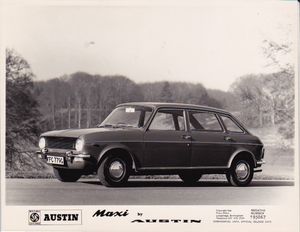
In truth, neither the Maxi nor the Allegro were really the misfits they were frequently portrayed to be. But their eccentric styling, in stubborn defiance of market trends of the time, and advanced-but-underdeveloped technology, meant they were perceived as oddball products on the fringe of mainstream tastes.
It appeared these lessons had been heeded when the go-ahead was given for the new range in 1975. The troublesome hi-tech features of the Maxi, Allegro and Princess were binned, and design engineer Spen King ordered that the new car would be utterly conventional in every way. Volkswagen's Golf had set the trend for the lower-medium market in the 1970s with a simply engineered, well-built product. If BL could do the same, it would have a winner on its hands.
The new car would not suffer from any of the engineering constraints which afflicted the styling of the Maxi and Allegro, either. While the Maxi had to make do with doors from the already dated Austin 1800, and the Allegro used the tall engine from the Maxi and the heater from the Marina, the designers of the new car had a largely clearn sheet of paper. The appalling industrial relations which had blighted British Leyland throughout the 1970s had also improved considerably by 1983, so what could possibly go wrong?
A familiar tale of internal company politics, strange styling, poor marketing and the famously shoddy BL build quality would do for the Maestro, ultimately bringing about the demise of the Austin brand, and ending BL's role as a major player in the motor industry.
A number of competing designs were submitted in the early stages, but these were swiftly whittled down to two: Ian Beech's effort featured unusual angular styling, while Harris Mann produced a more conventional-looking effort.

Customer clinics – focus groups for would-be buyers – favoured Mann's design, but as the designer of the Allegro, Princess and struggling TR7, he wasn't exactly flavour of the month. His effort was controversially canned, and Beech's design, with its trademark 'scalloped' sides, was largely settled by the end of 1975. There was much to commend in Beech's proposal – angular lines were very much in vogue in the mid-1970s, and the tall, glassy profile made for excellent interior space and visibility. Had it swiftly been brought into production, it might have made the existing Vauxhall Chevette and Ford Escort look very dated.
But, being British Leyland, the project became bogged down in company politics and cash shortages, and it would be another seven years before it was ready for launch. By which time it already looked very dated.
Mindful of this, the marketing department decided some avant-garde features were urgently needed. The talking dashboard with digital display was hastily added, along with plastic body-coloured bumpers. History was repeating itself, a decade after the marketing whizzkids made the infamous last-minute decision to give the new Allegro a square steering wheel.
The Maestro would also feature an electronic engine management system, and the success of the MG Metro, launched in 1982, meant there would also be an MG-badged sporting version. The engineers protested there was little time to develop this properly, but once again, the marketing men got their way.
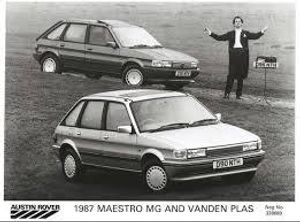
Harold Musgrove, who became chairman of the Austin Rover division in 1982, recalled the moment he saw the Maestro for the first time.
"I was first shown Maestro at a clinic in 1981, and I was appalled by it. I phoned (his boss) Ray Horrocks immediately and said it had to be stopped. He said it can’t, we have already ordered the body tooling and it has to go ahead."
One of Musgrove's first acts was to sack David bache as head of the styling department, the man who was ultimately responsible for choosing the design. Roy Axe was appointed as his successor, but he quickly wondered what he had let himself in for when he was shown a prototype.
"I couldn’t believe my eyes," he later recalled. "The car’s whole stance and proportion were wrong. The spiky lines and all the facets and scallops made the surfaces look hollow and weak.
"Design was moving into more rounded forms and this car was back in the old folded-paper era. Its proportions were peculiar too.
"In short, it was a complete shambles. I thought so and said so. The interior was even worse. The fascia panel was like a wet codfish, all floppy. It was engineering of the 1950s not of the 80s. To find a car that was two decades out in its thinking was just mind boggling.
"When I said, 'We have got to start again', it was made clear to me that the car was only four months off production so there was nothing anybody could do."
For a company dependent on handouts from an increasingly sceptical government, it was hardly surprising BL bosses did not want to tell ministers it had squandered millions developing a sub-standard product. Musgrove told Axe, in his famously colourful language, that his input was 'not helpful' and that he should make the best of a bad job.
Axe did win the battle to redesign the instrument panel, but it would not be ready in time for the launch date. This meant that for the first three years the Maestro would suffer from a fascia likened to a 1970s Amstrad hi-fi system, and which became notorious for creaking and rattling the moment the customer left the showroom.
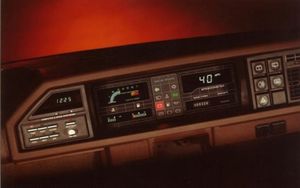
The talking dashboard, which was only fitted to the higher end models, quickly ran into problems as a number of drivers found themselves with cars that wouldn't shut up. Among them were John and Joan Dennis, who found the novelty quickly wore off when their Maestro Vanden Plas developed a mind of its own.
For example, when the seatbelts were fastened, the computerised voice told them the lights were on.
“Halfway down the road it’s quite likely to tell you to belt up,” said Mr Dennis.
But that was only the start of the Dennis's problems. Two days after taking delivery, their car was back in the service bay with a faulty battery. A new battery was fitted, but the electronic dash continued to insist that it was flat. If that wasn't enough, an AA inspection revealed nearly 30 faults on the six-month old car.
The new technology which had been hastily added to make the dated car seem modern was causing untold problems. The body-coloured bumpers, which used pioneering techniques never seen on a mass-market car before, would crack in cold weather. Early examples of the sporty MG version, which had been hurriedly developed at the last minute, became notorious for carburettor problems. The hi-tech electronic engine management system also proved temperamental. For a car which had been nearly eight years in gestation, the Maestro was horribly underdeveloped.
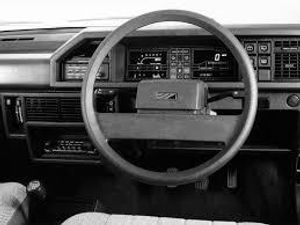
Nevertheless, initial reaction from the motoring press was positive. The Express & Star's Patrick Braithwaite described the Maestro as 'hard to fault', and predicted it would 'cause a few sleepless nights at Ford and Vauxhall'.
Which no doubt came as music to the ears of those who had worked on the new car. And it did sell well to begin with, selling a record-breaking 6,500 cars in its first month.
And then, on March 28, the old BL problem of industrial unrest reared its head again when members of the Transport & General Workers Union voted to go on strike in a dispute over 'washing up time' at the end of shifts. Maestro production was halted for nearly a month, leading to a number of cancelled orders. Cars with a retail value of £100 million – a third of the money the Government had given to bail-out BL – were lost during the stoppage.
The Maestro did reasonably well for the first two years, becoming the sixth best-selling car in Britain, but it never seriously threatened the Escort. By 1986, sales were falling sharply, and the car struggled to make the top 10 sellers list.
Many people, of course, enjoyed the Maestro, and in a lot of respects it was unfairly maligned. It was spacious, practical and comfortable, and the 1989 MG Turbo was one of the fastest production hatchbacks on sale. But the combination of gawky styling and advanced-but temperamental-technology meant it had something of an image problem right from the start, it seemed just a bit nerdy. Instead of producing a car to take on the Golf, Astra or Escort, British Leyland had unwittingly produced the heir to the Austin Maxi.
Indeed, the five door, six-light styling even looked a lot like the Maxi. It didn't help that it was exactly the same 'in-between' size as its unsuccessful predecessor, bigger than an Escort, but smaller than a Sierra.
Keith Evans, of the AR Online website, says this played a significant role in the Maestro's downfall.
"It was trying to sell the Maestro as a Sierra rival as well as an Escort rival, straddling two classes, but the result was that this ploy only managed to confuse potential customers, who saw the Maestro as neither fish nor fowl," he says.
"The company wanted to ‘have their cake and eat it’ but in the end, it turned out to be a fundamental error, and one that the company was guilty of in the past – and would also prove to be guilty of in the future."
Harold Musgrove, who was chairman of BL's Austin Rover division at the time of the Maestro's launch, later spoke of his regret that the car ever went into production.
"We should have said it just wasn’t good enough and stopped it," he said.
"But I don’t think we had the luxury of that being a possibility and to be perfectly frank it was infinitely better than the Princess or Allegro.
"But in market research it never managed to come first in any category – top in nothing."
And the famous talking dashboard? It was quietly canned in 1986, and the teething troubles were gradually ironed out.
Like the Maxi, it did build up a loyal following among motorists who valued practicality over style, and enjoyed an even longer lifespan, continuing as a cut-price alternative to its successor, the second generation Rover 200, right up until 1995.
For 12 months after UK production ceased, the now renamed Rover Group started producing the Maestro in kit form, for assembly in Bulgaria. In 1997, Parkway garage in Ledbury bought 621 of these kits and assembled them, extending the life of the Maestro right up until 2001. Heavily modified Maestros continued to be manufactured in China right up until 2001.
Ironically, the Maestro also outlived the famous Austin car brand, whose demise was largely down to the failure of the Maestro and Montego to secure a strong enough share of the market. From 1988 onwards, Metros, Maestros and Montegos were effectively 'brand-less'.
The Maestro had been the make-or-break car for Austin and British Leyland, and had it succeeded, there is a good chance we would still have a British volume car producer. But as so often had been the case in the past, BL came up with the wrong car, at the wrong time. And built it very badly.
The glamour of David Hasselhoff's Knight Rider never rubbed off on the Maestro. But it did feature heavily in the opening credits of Crossroads.
Owner's perspective – Neil Moore
Neil Moore has a very rare Maestro indeed, a 1991 Maestro 700 van.
"There are only seven vans from that year that are registered as still being on the road," says Neil, who lives in Halesowen.
The chairman of Black Country Classic Car Club, said he originally bought the Maestro because of its spacious load bay, although it is strictly a show vehicle these days.
"It's a huge van for the size of the vehicle, it's got a 6ft load-bed in the back.
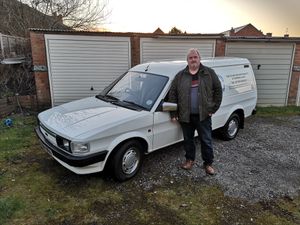
"The vans sold very well, they were very popular with British Gas and British Telecom," he says.
Neil says much of the interest in the Maestro among collectors probably stems from the car's underdog status, and its role in the troubled history of Britain's car history.
"It didn't help that it followed on from the Allegro, which wasn't the best car in the world," he says.
"It's a British Leyland vehicle, which was probably designed to last seven to 10 years, and then you threw them away."
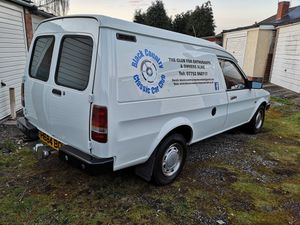
For Neil, there is another reason why the Maestro is dear to his heart.
"When I did my mechanic's apprenticeship, I trained on the Maestro, the Austin Ambassador, and the Rover SD1," he says.
"I remember one of the first cars I worked on was a light green Maestro with a talking dashboard."
Another appeal of the Maestro was its broad model range, from the base 1.3 through to the MG 2.0EFi Turbo.
"The MG Turbo was a fast car," he says.

